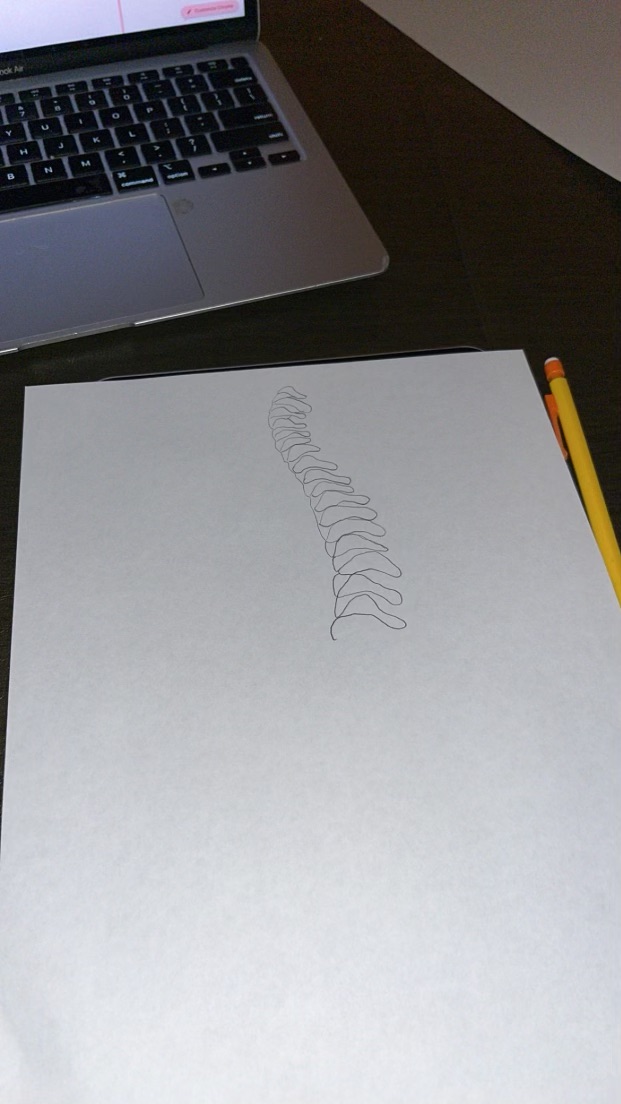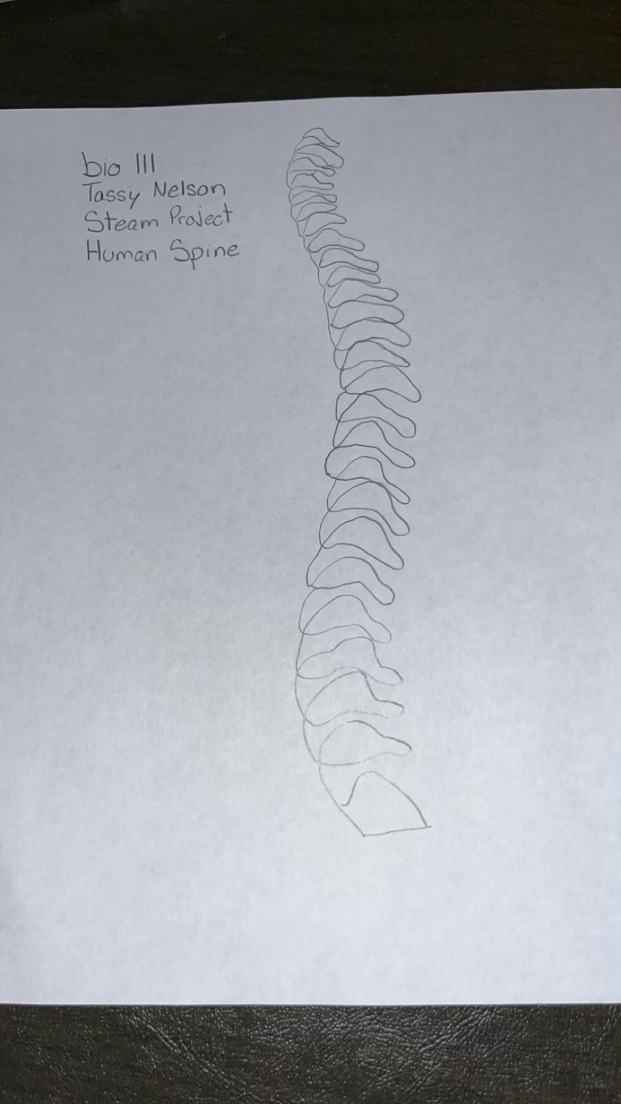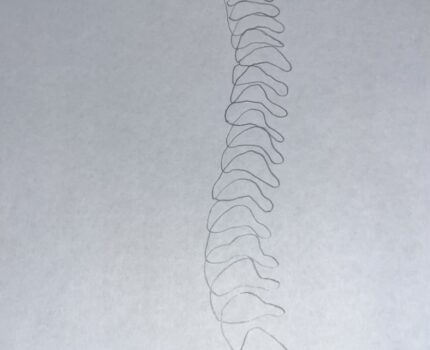For my steam project I chose to research the effects of scoliosis. This covers the objectives of knowing the stages of bone development and repair and the functions of bone covered in unit four. Scoliosis is a spinal deformity that causes an abnormal curve of the spine in either a “C” or “S” shape. Scoliosis is commonly diagnosed in adolescents but can occur when people have cerebral palsy or muscular dystrophy.
There are three types of scoliosis. The first is idiopathic scoliosis which is the most common, the second is congenital scoliosis that is detected at birth, and the third is neuromuscular scoliosis which are abnormalities in muscles and nerves that support the spine. Signs of scoliosis can include uneven shoulders, one shoulder blade appearing more prominent than the other, uneven waist, one hip higher than the other, one side of the rib cage jutting forward, a prominence on one side of the back while bending forward, constant leaning to one side, and uneven leg lengths. Symptoms of scoliosis are back pain, difficulty standing upright, core muscle weakness, leg pain, numbness, or weakness.
Depending on the age you are when you develop scoliosis it can affect different parts of your spine. In adolescence most cases of scoliosis occur in the thoracic spine / rib cage area. In adults it is mainly in the lumbar or lower spine. The lumbar spine is more likely to be affected because of changes seen during aging or degeneration which can increase symptoms like pain.
Causes of scoliosis are different depending on the type someone has but they can be vertebrae malformation during embryonic development, a genetic change, a spine injury, a tumor on your spine, or a condition that affects nerves and muscles. In idiopathic scoliosis a specific cause can not be identified.
There is also a connection of scoliosis and bone density. On top of someone having scoliosis and the other issues with their skeleton it can make the curve of the spine worse, affect how serious the spinal deformity is, and limit the possible treatment options for scoliosis.Poor bone health like osteoporosis can increase the curve of the spine. Osteoporosis is low bone mineral density, it causes weak bones so a person with osteoporosis has a higher risk of bone fractures. Weak bones cannot support the spine easily which adds stress to the skeleton and over time makes the curve of the spine worse. Bone density also affects the development of the spine.
In the picture I drew you can see the curve of the spine that is scoliosis.
Sources
Cleveland Clinic. (2024, January 26). What Is Scoliosis? Cleveland Clinic. https://my.clevelandclinic.org/health/diseases/15837-scoliosis
Nunez, K. (2022, September 14). Scoliosis and Osteoporosis: Links, Risk Factors, and Prevention. Healthline. https://www.healthline.com/health/scoliosis-and-osteoporosis
Mayo Clinic. (2023, May 13). Scoliosis – Symptoms and causes. Mayo Clinic. https://www.mayoclinic.org/diseases-conditions/scoliosis/symptoms-causes/syc-20350716
Stitzel, D. C. (2024, September 20). How Bone Density Affects Scoliosis Treatment. Treating Scoliosis. https://treatingscoliosis.com/blog/scoliosis-treatment-impact-of-bone-density/
Johns Hopkins Medicine. (2019). Scoliosis. Johns Hopkins Medicine Health Library. https://www.hopkinsmedicine.org/health/conditions-and-diseases/scoliosis
Johns Hopkins Medicine. (2019). Scoliosis. Johns Hopkins Medicine Health Library. https://www.hopkinsmedicine.org/health/conditions-and-diseases/scoliosis



